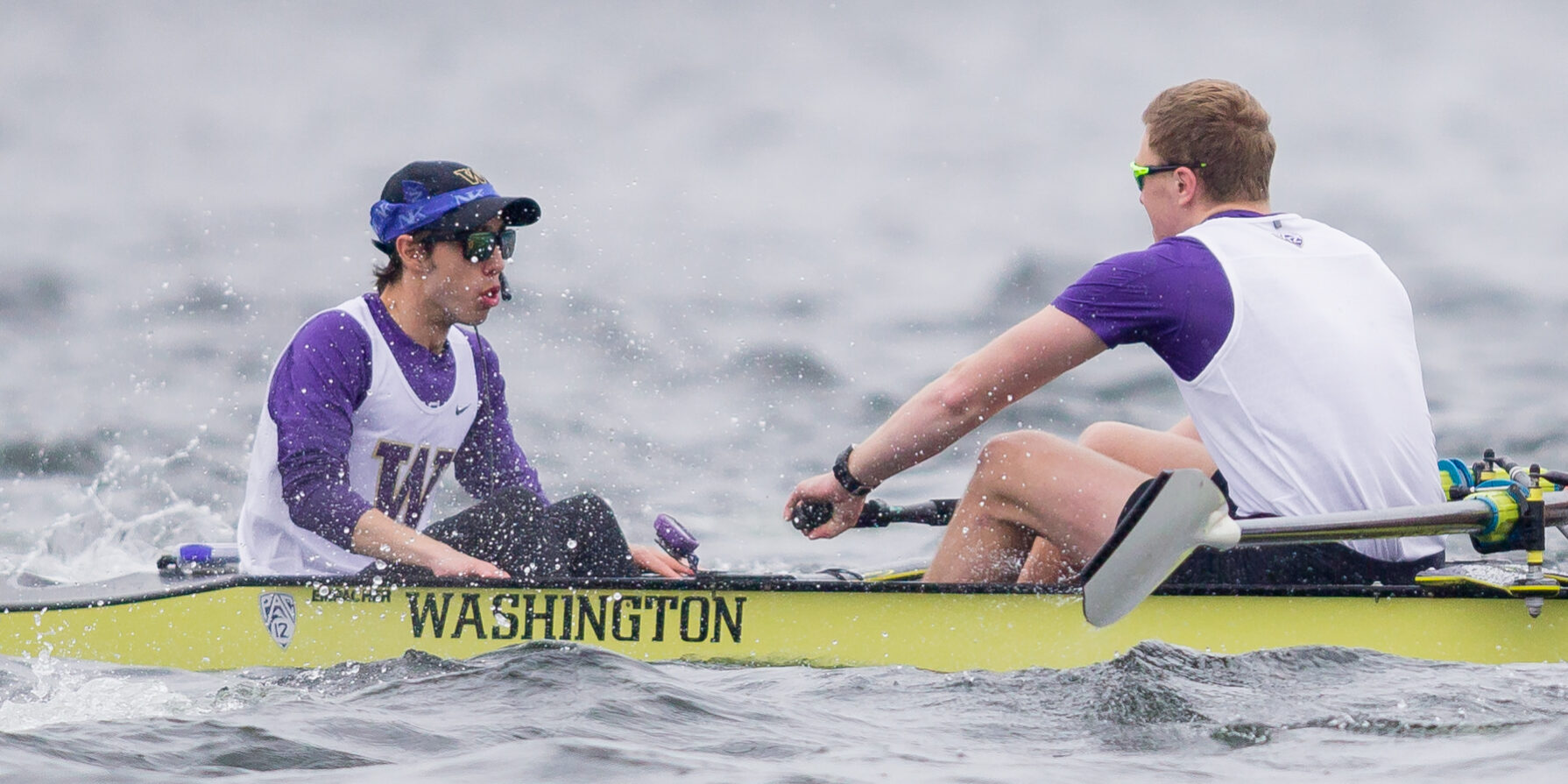The job of a coxswain is complex, and completely distinct from the rowers they lead. “From the moment the shell is launched, the coxswain is the captain,” wrote Daniel James Brown in his bestselling “The Boys in the Boat.” “He or she must exert control, both physical and psychological, over everything that goes on in the shell.”
Here are a few of those controls that the best have to master—simultaneously.
Navigation – Great coxswains must steer a clean line in this hyper-sensitive vessel that is 80-feet long and narrower than an oarsman’s shoulders. This requires constant reading of the wind, the water, the synchronization of the strokes.
Personnel Management – “You try to get the most out of your people and avoid calamities between strong personalities,” says Dwight Phillips. “Part of the job of the coxswain is to make sure that that nothing gets in the way of the boat going fast.”
Psychology – Authority must be earned. “You have to project self-confidence and gain the crew’s respect so that your size doesn’t matter and they listen to you,” says John Bisset. “We’re all on the same page, we’re all in it together, we all want to win. So let’s get the job done.”
Strategy – “As the boat’s strategist, the coxswain needs to know the conditions of the course and the competition’s tendencies and capabilities in order to get the crew’s maximum effort,” says Bruce Avolio, director of the Foster School’s Center for Leadership and Strategic Thinking.
Analysis – Modern onboard technology—on top of old-school sensory analysis—means processing enormous amounts of data on the fly. “You have to find the signals through the noise,” says Stuart Sim.
Communication – However advanced the technology, commands must be clear, simple and powerful. A former Husky oarsman said this of Eric Cohen: “I couldn’t always hear him, but I always knew what he was saying.”
Selflessness – Modeling the sport’s essential ethic. “It’s always about the team, about being in it for the greater good of everybody,” says Erin O’Connell.
Motivation – “You’ve got to know exactly when to be technical, and when to motivate,” says Sim. “When to give the carrot and when to get the stick.”
Competitiveness – “There has to be that edge, that overwhelming desire to win,” says Cohen, “and a huge amount of disappointment if your boat doesn’t win.”
Trust – “The team must have total confidence in the coxswain’s ability to make decisions in high-pressure situations,” says Yazmin Farooq, head coach of the NCAA Champion Husky women’s crew and a former US National Team coxswain. “Almost every race has a moment of truth, when two boats are side-by-side and someone’s going to break. Trust may take many months to be earned, performance over time. But in those sudden-death moments, when you need to convince your rowers to do something that might seem beyond their capabilities, it’s absolutely essential. When they trust you, you can will them to do more.”
“These things are what make a coxswain a vital member of a crew rather than dead weight in the stern,” adds Sim. “If I’m not adding value, then I should not be operating the boat.”







